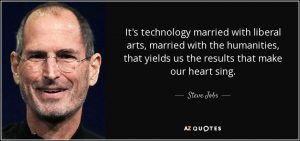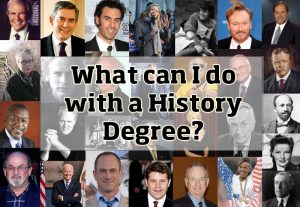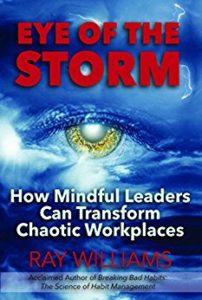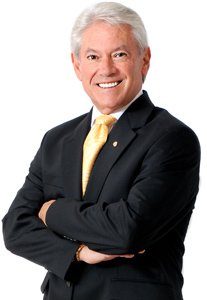Liberal arts education is in a life-and-death struggle amidst pressure by politicians, business leaders and educational administrators to diminish or eliminate their presence in our post-secondary institutions and replace them with a targeted educational system emphasizing technological and practical skills. Yet, ironically, the importance and utility of a liberal education has never been greater.

The Causes for the Decline in a Liberal Education
Powerful forces have contributed to a perspective that a liberal education is no longer relevant including:
- Each year in the U.S. alone, more than 30 million workers are working in jobs that did not exist in the previous quarter;
- Every year, more than 1/3 of the entire labor force changes jobs;
- Students now graduating from post secondary institutions will have 10-14 jobs by the time they are 38 years old;
- Competition with Asian countries where technological education is stressed;
- Unemployment rates for college graduates remain high regardless of the economic recovery from the recession.
Political and “Expert” Pressure on Colleges and Universities
Business and military leaders complain that students are ill-educated for the work that needs doing. Some, for example, Walter Russell Mead, recommends scrapping liberal arts in higher education and replacing it with skill based certificates, or The Council on Foreign Relations, which recommends an education system that produces better soldiers, security analysts, managers and producers.
Liberal arts education programs are under duress in higher education, in an atmosphere of increasing anti-intellectualism, where uninformed opinions based on little facts and even less study of our history and culture is on a daily basis being spouted by political and business leaders.
Part of the reason for the decline of liberal arts in colleges and universities and their focus more on professions, technology and sciences has been an economic one. The rising cost of post secondary education has made a liberal arts education out of reach for most working class and middle class families, and these students are compelled to pursue vocationally oriented educations out of necessity. Second, higher education institutions have partially solved their funding problem by turning more and more to research grants and endowments provided by corporations which are often driven by self interest.
In an article by Joseph Epstein argues the division between vocational and liberal arts education, which began during the 19th century with the advent of the land-grant state universities in the US., are today tilting further and further in favor of the vocational. Even within the liberal arts, more and more students are fleeing from the traditional liberal arts courses such as English or History to the marketable subjects such as Economics, in hope that this will bring them the practical credentials that might impress prospective employers.
The war on the liberal arts is also born from the same desire of right wing America which has produced voter ID laws, which is an attempt to limit democratic participation. The goal of a liberal arts education was never primarily direct economic benefit for the recipients, it was to produce an educated citizenry.
Rosanna Warren, the Hanna Holborn Gray Distinguished Professor at the University of Chicago, argues “Most people need and want the arts in their lives. Our civilization may now be so coarsened that we will eliminate the humanities from our schools, and we will train citizens only for technical skills which give them no sense of what they are living for, or why.”
What is a liberal education and why is it important?
According to the Association of American Colleges and Universities, a liberal education can be defined as “an approach to learning that empowers individuals and prepares them to deal with complexity, diversity, and change. It provides students with broad knowledge of the wider world (e.g. science, culture, and society) as well as in-depth study in a specific area of interest. A liberal education helps students develop a sense of social responsibility, as well as strong and transferable intellectual and practical skills such as communication, analytical and problem-solving skills, and a demonstrated ability to apply knowledge and skills in real-world settings.”

Michael S. Roth, president of Wesleyan University, a private liberal arts college in Middletown, Connecticut, argues a liberal education matters more than it ever has, in his book are “Beyond the University: Why Liberal Education Matters. He says, “Liberal education should enhance abilities to translate across ideas and assumptions, but instead the public is treated to the spectacle of pointy-headed specialists great at one thing but not to be trusted beyond their small subfield. Of course, advanced work in any area requires rigorous work and real technical competence. But we must not confuse being a competent technician with being a scientist who can make discoveries or a teacher who can inspire students by translating complex technical issues into terms clearly relevant to pressing human concerns.” Roth makes an excellent point by contending “It is especially urgent to advocate effectively for a broadly based pragmatic liberal education when confronted by ignorant authoritarians who reject inquiry in favor of fear mongering and prejudice. A broad education with a sense of history and cultural possibilities arms citizens against manipulation and allows them to see beyond allegiance to their own.”
In his new book, In Defense of a Liberal Education, Zakaria writes that America’s success was built on a liberal arts education — on multidisciplinary study for the sake of learning rather than vocational study for the sake of a set career path. Liberal arts subjects– such as English, philosophy and political science — teach people how to think, write and communicate; those skills remain useful through the many twists and turns of a career in today’s ever-changing digital economy, he argues. And, he says, it is dangerous to overemphasize STEM (science, technology, engineering and math) education as separate from or more important than the liberal arts.
The term “liberal education” was first used in classical Greek and Roman times, chosen to emphasize the fact that it helped people deal with their rulers critically. Through time, a liberal education was thought to help a person become wise.
People often assume “liberal arts” is a political term. As it’s used in academia it’s closer to the idea of broadening the mind and “liberating” it from parochial divisions and unthinking prejudice. It encourages the questioning of assumptions and reliance on facts as well as an understanding that even facts can be interpreted differently through different lenses. Ideally, it enables individuals to gather information, interpret it, and make informed decisions on a wide variety of topics.
As former U.S. Secretary of Education Richard Riley has so aptly put it, “We are currently preparing students for jobs that don’t yet exist, using technologies that haven’t been invented, in order to solve problems that we don’t even know are problems yet.”
“I think, increasingly, anything you learn is going to become obsolete within a decade,” says Lawrence Summers, a former president of Harvard University, “and so the most important kind of learning is about how to learn.”
David Autor, the MIT economis who has stuided the impact of technology and globalization on labor, writes “human taks that have proved most amendable to computerization are those that follow explicit, codifiable proceures where computers now vastly exceed human labor inn speed, quality accuracy and cost efficiency. Tasks that have proved most vexing to automate are those that demand flexibiilty, judgment and common sense.” In other words, the kinds of skills learned in a Liberal Arts education.
The humanities and social sciences are not merely elective, nor are they elite or elitist. They are necessary and require our support in challenging times as well as in times of prosperity. And our current education system in North America is losing that perspective. So says a report by the national commission on the humanities and social sciences of the American Academy of Arts and Sciences. Dedicated to the free and open pursuit of knowledge for its own sake, a liberal arts education provides a multi-faceted view of the world. It enables students to see beyond one perspective, encouraging them to understand others’ even if they don’t agree.
It’s fashionable these days for many business leaders to lampoon liberal arts graduates and exalt those with professional degrees. Yet as Peter Drucker, often acknowledged as the world’s foremost expert on management and leadership, said this belief is misplaced. Drucker drew many of his insights from literature and social sciences, not economics and business. Rick Wartzman, executive director of the Drucker Institute argues, “The problem is that the broad world of ideas has become largely separated from the world of business.”
In a recent Harvard Business Review piece titled “Liberal Arts in the Data Age,” author JM Olejarz writes about the importance of reconnecting a lateral, liberal arts mindset with the sort of rote engineering approach that can lead to myopic creativity.
In an article in the London Times, entitled “Harvard’s Masters of the Apocalypse,” Philip Broughton, a Harvard Business School graduate and author of What They Teach You At Harvard, says “You can draw up a list of the greatest entrepreneurs of recent history, from Larry Page and Sergey Brin of Google and Bill Gates of Microsoft, to Michael Dell, Richard Branson, Lak-shmi Mittal – and there’s not an MBA among them.” Mark Zuckerberg was a classic liberal arts student who also happened to be passionately interested in computers. He studied ancient Greek intensively in high school and majored in psychology while he attended college.
Steve Jobs made a statement that points straight to the value of the liberal arts in the 21st century. “We’re not just a tech company, even though we invent some of the highest technology products in the industry,” said Jobs, “It’s the marriage of that plus the humanities or the liberal arts that distinguishes Apple.”
Norman Augustine, longtime chairman and CEO of Lockheed Martin, insists that liberal arts deficiencies are putting the U.S. at a strategic disadvantage. In a 2010 American Management Association Study (link is external), less than 50% of the executives polled said their employees had effective communication and innovative-thinking skills and 80% said colleges and universities could better prepare America’s future work force by placing more emphasis on the humanities.
E. O. Wilson, a world-renowned American biologist contends “We are drowning in information while starving for wisdom,” Wilson declares. “The world henceforth will be run by synthesizers, people able to put together the right information at the right time, think critically about it, and make important choices wisely.”
“You need some people who are holistic thinkers and have liberal arts backgrounds and some who are deep functional experts,” Laszlo Bock, Google’s senior vice president who oversees the company’s hiring, told the New York Times (link is external), “Building that balance is hard, but that’s where you end up building great societies, great organizations.”
Tech CEOs are generally keen to hire people trained in the humanities, partly because a large proportion of them have similar backgrounds themselves. (A third of all Fortune 500 CEOs have liberal arts degrees.) But for students coming out of liberal arts colleges, it can still be difficult to find work in the tech sector. Georgia Nugent, the former president of Kenyon College who is currently a senior fellow at the Council of Independent Colleges, says that top executives are not responsible for hiring entry level staff. Instead, recruiters and HR managers on the hiring front lines often use systems that pick candidates for tech jobs based on key terms like “coding” and “programming,” which many liberal arts graduates will not have on their resumes.
Nugent is concerned about this trend because she thinks that training students for very specific tasks seems shortsighted when technology and business is evolving at such a fast rate. “It’s a horrible irony that at the very moment the world has become more complex, we’re encouraging our young people to be highly specialized in one task,” she says. “We are doing a disservice to young people by telling them that life is a straight path. The liberal arts are still relevant because they prepare students to be flexible and adaptable to changing circumstances.”
In 2008, research teams at Duke and Harvard surveyed 652 U.S.-born chief executives and heads of product engineering at 502 technology companies. Vivek Wadhwa, a Distinguished Fellow at Harvard Law School and Carnegie Mellon’s School of Engineering, who led the teams, found these executives tended to be highly educated, 92 percent holding bachelor’s degrees and 47 percent holding higher degrees. Hardly 37 percent held degrees in engineering or computer technology, and just 2 percent held degrees in mathematics. The rest had degrees in fields as diverse as business, accounting, health care, and arts and the humanities.
We learned that although a degree made a big difference in the success of an entrepreneur, the field it was in and the school that it was from were not significant factors. YouTube chief executive Susan Wojcicki, for instance, majored in history and literature; Slack founder Stewart Butterfield in English; Airbnb founder Brian Chesky in the fine arts. And, in China, Alibaba chief executive Jack Ma has a bachelor’s in English.
Wadhwa goes on to say: “Creating solutions such as these requires a knowledge of fields such as biology, education, health sciences, and human behavior. Tackling today’s biggest social and technological challenges requires the ability to think critically about their human context, which is something humanities graduates are trained to do. An engineering degree is very valuable, but the sense of empathy that comes from music, arts, literature, and psychology provides a big advantage in design. A history major who has studied the Enlightenment or the rise and fall of the Roman Empire gains an insight into the human elements of technology and the importance of its usability. A psychologist is more likely to know how to motivate people and to understand what users want than is an engineer who has only worked in the technology trenches. A musician or artist is king in a world in which you can 3D-print anything you can imagine. When parents ask me now what careers their children should pursue and whether it is best to steer them into science, engineering, and technology fields, I tell them it is best to let them make their own choices. Rather than telling our children what to study and making education as a chore, we should encourage them to pursue their passions and to love learning.To create the amazing future that technology is enabling, we need our musicians and artists working hand in hand with our engineers. It isn’t either one or the other; we need both the humanities and engineering.”
At the very moment when China, Singapore and some European countries are seeking to institute the concept of a broad liberal education, increasingly the U.S. and Canadian higher education institutions are narrowing their focus on scientific and technological enterprises.
What About Financial Bottom-Line Results
There are lots of cause-and-effect arguments out there–science and technology graduates get paid more than liberal arts graduates, so the argument goes. Yet, in an article in the Wall Street Journal by Melissa Korn, she cites the research by the American Association of American Colleges and Universities (AACU) which advocates a broad-based liberal arts education and shows that while liberal arts graduates initially make lower salaries compared to business graduates, in the long term the differences are minimal. An excerpt of the AACU’s report states “The case for Liberal Arts goes beyond purely vocational or economic reasons, they are indispensable to the vitality of democracy and future of global understanding and community.” History majors often become well-paid lawyers or judges after completing law degrees, a recent analysis by the Brookings Institution’s Hamilton Project has found. Many philosophy majors put their analytical and argumentative skills to work on Wall Street. International-relations majors thrive as overseas executives for big corporations, and so on. Using tax records from University of Ottawa graduates, the Education Policy Research Initiative (EPRI) recently found that social sciences and humanities graduates enjoy steady increases in earnings — starting at an average of $40,000 right after graduation and up to $80,000 only 13 years later — similar to the average earnings of math and science graduates.
Burning Glass and Strada Institute for the Future of Work (formerly USA Funds, one of the nation’s largest student loan guarantors), recently published The Permanent Detour – Underemployment’s Long-Term Effects on the Careers of College Grads. The report noted that although it’s a popular target of those who insist that a college education should connect to a good job, majors in “Liberal Arts and Sciences, General Studies, and Humanities” had lower levels of unemployment compared to Business graduates. And the major with the fewest underemployed graduates, according to the report, was “Foreign Languages, Literature, and Linguistics.”
Finally, Fareed Zakaria, in his recent article in the Washington Post raises the alarm for an American push for STEM education and the diminishment of a liberal education, saying “America will not dominate the 21st century by making cheaper computer chips butr instead by constantly reimagining how computer and other new technologies will itneract with human beings.”
In summary, it’s clear that a core Liberal Education is necessary for a thriving economy and sustaining a democratic society.
Copyright: Neither this article or a portion thereof may be reproduced in any print or media format without the express permission of the author.
Read my latest book: Eye of the Storm: How Mindful Leaders Can Transform Chaotic Workplaces, available in paperback and Kindle on Amazon and Barnes & Noble in the U.S., Canada, Europe and Australia and Asia.



